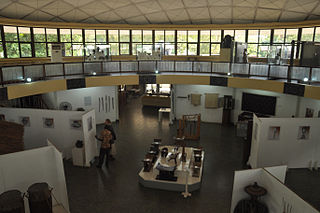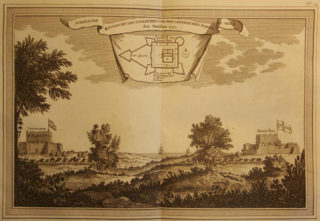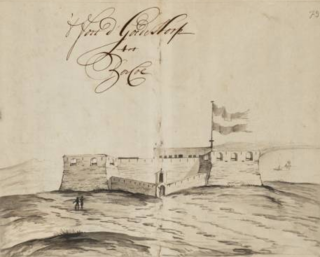
Accra is the capital and largest city of Ghana, located on the southern coast at the Gulf of Guinea, which is part of the Atlantic Ocean. As of 2021 census, the Accra Metropolitan District, 20.4 km2 (7.9 sq mi), had a population of 284,124 inhabitants, and the larger Greater Accra Region, 3,245 km2 (1,253 sq mi), had a population of 5,455,692 inhabitants. In common usage, the name "Accra" often refers to the territory of the Accra Metropolitan District as it existed before 2008, when it covered 199.4 km2 (77.0 sq mi). This territory has since been split into 13 local government districts: 12 independent municipal districts and the reduced Accra Metropolitan District (20.4 km2), which is the only district within the capital to be granted city status. This territory of 199.4 km2 contained 1,782,150 inhabitants at the 2021 census, and serves as the capital of Ghana, while the district under the jurisdiction of the Accra Metropolitan Assembly proper (20.4 km2) is distinguished from the rest of the capital as the "City of Accra".

The Museum of Science (MoS) is a nature and science museum and indoor zoological establishment located in Science Park, a plot of land in Boston and Cambridge, Massachusetts, spanning the Charles River. Along with over 700 interactive exhibits, the museum features a number of live and interactive presentations throughout the building each day, along with scheduled film showings at the Charles Hayden Planetarium and the Mugar Omni Theater. The Museum is a member of the Association of Science and Technology Centers (ASTC) and the American Alliance of Museums (AAM). Additionally, the Museum of Science is an accredited member of the Association of Zoos and Aquariums (AZA), being home to over 100 animals, many of which the museum gained after they were surrendered, confiscated, rescued or rehabilitated.

The National Museum, also known as the National Museum of Ghana, is a museum located in Accra, Ghana. Established in 1957, it is the largest and oldest of the six museums under the administration of the Ghana Museums and Monuments Board (GMMB). The museum closed in 2015 for restoration until eventually reopening in 2022.

Osu Castle is a castle located in Osu, Ghana, on the coast of the Gulf of Guinea in Africa.

Fort Patience is a Dutch-built fort located in the township of Apam, in the Central Region of Ghana. Originally built in 1697, it served as a defensive fortification and a trading post. Because of its testimony to European pre-colonial and colonial influence in West Africa, the fort was inscribed on the UNESCO World Heritage List along with several other forts and castles in Ghana.

Ada Foah is a town on the southeast coast of Ghana, where the Volta River meets the Atlantic Ocean. The town is located along the Volta River, off of the Accra-Aflao motorway. Known for palm-lined beaches and estuary islands, Ada Foah is also the capital of the Ada East District and the seat of the District Assembly.

A mobile museum is a museum educational outreach program that bring the museum to the people rather than vice versa. Typically they can be in Recreational Vehicles (RVs) or trucks/trailers that drive to schools, libraries and rural events. Their business model is to use grant or donor support, as they goal is to make the museum exhibit accessible to underserved populations. Below are some examples of mobile museums.

Ussher Fort is a fort in Accra, Ghana. It was built by the Dutch in 1649 as Fort Crèvecœur, and is two days' march from Elmina and to the east of Accra on a rocky point between two lagoons. It was one of three forts that Europeans built in the region during the middle of the 17th century. Fort Crèvecœur was part of the Dutch Gold Coast. The Anglo-Dutch Gold Coast Treaty (1867), which defined areas of influence on the Gold Coast, transferred it to the British in 1868. Because of its significance in the history of European colonial trade and exploitation in Africa, the fort was inscribed on the UNESCO World Heritage List in 1979.

Fort Amsterdam is a former slave fort in Abandze, Central region, Ghana. It was built by the English between 1638 and 1645 as Fort Cormantin or Fort Courmantyne, and was captured by admiral Michiel de Ruyter of the Dutch West India Company in 1665, in retaliation for the capture of several Dutch forts by the English Admiral Holmes in 1664. It was subsequently made part of the Dutch Gold Coast, and remained part of it until the fort was traded with the British in 1868. The Fort is located at Abandze, on the north-east of Cape Coast in the Mfantseman District of the Central Region of Ghana. Because of its testimony to European economic and colonial influence in West Africa and its historical importance in the Atlantic slave trade, the fort was inscribed on the UNESCO World Heritage List in 1979 along with other forts and castles in Ghana.

Fort Orange was built as a trading post on the Dutch Gold Coast in 1642, near Sekondi in the Western Region of Ghana. It functioned as a lodge for a while during the 1670s and that was the original purpose for the fort before it was used as a trading post. The trading post was enlarged into a fort in 1690. It was joined by an English Fort Sekondi in 1682. It was sold with the rest of the Dutch Gold Coast to the United Kingdom in 1872, and now serves as a lighthouse. Because of its historical importance in trade between Europe and Africa, Fort Orange was inscribed on the UNESCO World Heritage List in 1979 along with several other castles and forts in Ghana.

Fort de Goede Hoop or Fort Good Hope was a fort on the Dutch Gold Coast, established in 1667 near Senya Beraku.

Fort James is a fort located in Accra, Ghana. It was built by the Royal African Company of England (RAC) as a trading post for both gold and slaves in 1673, where it joined the Dutch Fort Crêvecœur (1649), and the Danish Fort Christiansborg (1652) along the coast of the then Gold Coast. Along with other castles and forts in Ghana, Fort James was inscribed on the UNESCO World Heritage List in 1979 because of its importance during the European colonial period.

Fort Komenda was a British fort on the Gold Coast, currently preserved as a ruin. Because of its testimony to the Atlantic slave trade and European economic and colonial influence in West Africa, the fort was inscribed on the UNESCO World Heritage List in 1979, along with several other castles and forts in Ghana.
The following is a timeline of the history of the city of Accra, Ghana.

The Environmental Protection Agency, is an agency of [[Ministry ], established by EPA Act 490 (1994). The agency is dedicated to improving, conserving and promoting the country’s environment and striving for environmentally sustainable development with sound, efficient resource management, taking into account social and equity issues. It oversees the implementation of the National Environment Policy. EPA Ghana's mission is to manage, protect and enhance the country’s environment and seek common solutions to global environmental problems. Its mission is to be achieved through an integrated environmental planning and management system with broad public participation, efficient implementation of appropriate programs and technical services, advice on environmental problems and effective, consistent enforcement of environmental law and regulations. EPA Ghana is a regulatory body and a catalyst for change to sound environmental stewardship.

Fort Vernon was a military structure designed to facilitate the Atlantic slave trade. The Royal African Company built the fort in 1742 near Prampram, a town in the Greater Accra Region of Ghana. It was built out of cheap materials – rough stones and swish. The Danes destroyed the fort before 1783. The British rebuilt it in 1806, but it soon started to collapse and was abandoned in about 1816. It was re-occupied by the British in 1831 but was again abandoned in 1844. It subsequently became ruins. Because of its importance during the slave trade and its testimony to European economic and colonial influence in West Africa, the fort was inscribed on the UNESCO World Heritage List in 1979, along with several other forts and castles in Ghana.
The Ghana Library Authority, established in 1950 as the Ghana Library Board, was the first public library service in sub-Saharan Africa. The public library movement in Ghana began in 1928, as a personal effort of the then Anglican Bishop Orfeur Anglionby of Accra. In 1946, the Aglionby Library Management Committee worked with the British Council Advisory Committee, towards library development in the then Gold Coast. In 2018 President Nana Addo Dankwa Akufo Addo appointed a Ghanaian Social Entrepreneur, Hayford Siaw as GhLA Chief Executive Officer. In May 2021, the Authority was shortlisted for the LBF International Excellence Awards in the 'Library of the Year' Category.

The Accra Technical University (ATU) was established in 1949 as a Technical School in Ghana and commissioned in 1957 as Accra Technical Institute before being converted into a Polytechnic in 2007 by the Parliament of Ghana.

Fort Victoria is a structure in Cape Coast, Ghana. It was initially known as 'Phipps Tower', in honour of its initial constructor English Governor Phipps. Its name was changed later to Fort Victoria in honor of Queen Victoria. Along with other nearby forts and castles, Fort Victoria was inscribed on the UNESCO World Heritage List in 1979 because of its European colonial significance.
King OkaiKoi was a warrior king who formed the Akwashong, supreme military command, which provided the basis of renewal of Ga-Dangme military power.

















